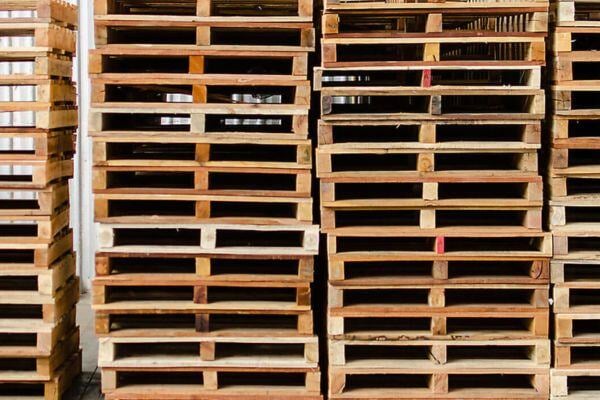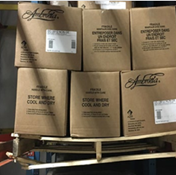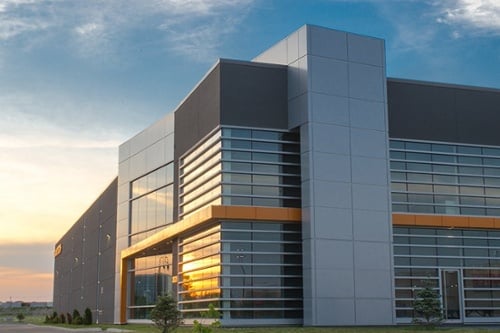Pallets form the foundation for transporting and storing products. Just like pallet racks, pallets are critical to your warehouse safety plan. Choosing the wrong type or quality of pallets can lead to pallet damage, rack failures, and increased costs.
To ensure safety and efficiency, it’s essential to understand how pallets interact with your products, logistics, and racking systems. By selecting the right pallets, you can:
-
Avoid pallet damage, weakness, and failure.
-
Reduce the risk of rack damage.
-
Lower costs and boost unit load efficiency.
Read on to learn why your choice of pallets matters and how it impacts your warehouse’s safety and productivity.

Avoiding Pallet Damage and Failure
At a basic level, most operations need pallets that are good enough for their needs but not much better than that. This is because most shipments are one-way, where the pallets must survive only a single trip and won’t be collected again by your facility. This means that many facilities get away with the lowest-cost and lowest-quality pallets their application allows. However, using a cheap foundation can eventually catch up with you.
As facilities evolve and their products change, pallets used previously may no longer be sufficient for their needs. Products may get larger or heavier, pallet supplier quality may dip over time, or the equipment used in the warehouse may change. When this happens, pallets have a higher chance of breaking or failing.
Pallet failure is dangerous and expensive. Workers can be injured, products can be ruined, and equipment can be damaged. Even when a snapped board or stressed pallet results in nothing more than time lost, that’s still lost productivity that’s hard to get back.
Lower Risk of Rack Damage or Failure
Nobody wants to deal with a broken pallet, but failures on pallet racks can have much more significant consequences. Racks are sturdy and dependable but have limitations. They are generally designed to support heavy vertical loads rather than lateral loads.
When pallets break or fail, individual items or the whole unit load can slip off the pallet and impact whatever surface is below it. When pallets break during loading or off-loading from the rack system, the rack can absorb the force of thousands of pounds of falling material. Items or loaded pallets landing on a beam level or upright component in this way often result in at least some lateral loads being transferred to the rack, which can compromise the stability of the racking system.
Even in broken pallets that result in relatively minor rack damage, such as wooden shelving needing replacement, the potential risks are still significant since failures of any kind can lead to cascading effects on a beam level or across an entire rack. More mechanically complex racks, such as pushback or pallet flow racks, can also be damaged in a way that requires costly fixes and harms productivity.
Poorer-quality pallets are much more likely to break or fail. At best, they result in time-consuming clean-ups and transferring inventory to a new pallet. At worst, workers are injured, and warehouse productivity can be impacted. With the right expertise and a relatively small amount of time, any facility’s cost needs and application requirements can be balanced to find the right pallet for the operation. Using pallets of subpar quality or ones not compatible with your pallet rack safety standards eventually results in being penny-wise but pound-foolish.

Using higher-quality pallets with designs that fit your operation lowers the chance of pallets breaking during use and risking damage to racking systems. Still, it also makes economic sense for most facilities. Pallets are the basis for almost every warehouse, and if that base is not optimized, there is only so much improvement that can be done around the edges.
Whether the pallets are new, recycled, or made from a combination of materials, there is an optimal size and type of pallet for every situation. The following considerations are just a few of the things that should go into deciding what pallet is best for your unique circumstance:
- Pallet weight capacity
- Product size
- Pallet dimensions
- Racking type and dimensions
- Warehouse layout and equipment
- Palletization process
Facilities do best when these different components of an operation are as closely aligned as possible, and pallets are often the most common thing between them.
- Are your pallets too small for your unit loads? Uneven weight distribution may cause extra stress on those pallets and racks.
- Would you like your palletization process to be faster? Comparing your pallet dimensions with the sizes of your packages can reveal much more efficient ways to create unit loads. This allows you to fit more products on each pallet while reducing transportation costs.
- Do you use pallets that are smaller or larger than what your equipment is designed to handle? Altering your pallet inventory might increase safety.
All these considerations and more are best handled through a consultation with an experienced pallet design and manufacturing team. Pallet design is a science that can optimize many things. Modern software allows for accurate and detailed design simulations. Everything from individual component choice to wood species and palletization method can be entered to give statistics like expected pallet lifecycle and weight capacity.
Many think pallet design is reserved for new or custom pallets, but recycled pallets can be enhanced for individual facilities. Grades are based on a pallet’s aesthetic qualities, number, and kind of repairs. Recycled pallets, especially those of higher grades, have a weight capacity comparable to new pallets. Each of these grades can also be used in the software to show the effects of alternative designs and how well a pallet of a particular grade would work for an application.
The list of possible pallet operational improvements is extensive and unique to every facility. The benefits of a pallet inventory that tightly fits a facility’s pallet rack safety plan, application, and a variety of equipment will far outweigh the small amounts of time or money required to set up and maintain a quality pallet program. Manufacturing, logistics, and distribution are all industries with long time horizons.
Conclusion: The Right Pallets and Racks Safeguard Your Warehouse Safety
Investing in the right pallets and maintaining your pallet racking systems are essential to ensure warehouse safety, efficiency, and long-term success. Poor-quality pallets can lead to costly damages, downtime, and safety risks, while optimized pallet choices and well-maintained racks enhance your operations.
At Damotech, we specialize in helping warehouses maintain and protect their pallet racking systems. Our expert team can guide you in choosing the best rack protection solutions to complement your pallet strategy, ensuring a safer and more efficient operation. Contact Damotech today to learn how our products and expertise can safeguard your warehouse and prevent unnecessary risks.
- Top 12 Largest Warehouses in North America (Size, Tech & Safety)
- Top 100 Warehouse Safety Quotes for Toolbox Talks, Posters & Meetings
- Costco’s Supply Chain Strategy: Decoding Its Warehousing Approach
- Minimum Distances Between Pallets, Rack Systems & Building Structures
- IKEA Warehouses: Efficient Warehousing and Distribution Strategies








